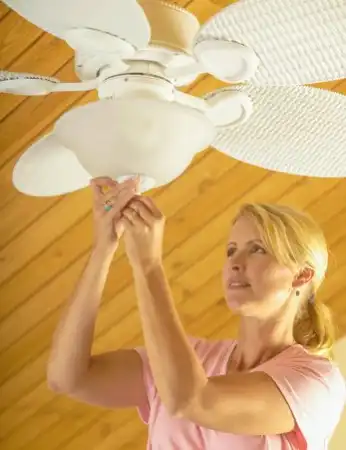How Do I Choose a Ceiling Fan & Install It?
4 Tips For Choosing and Installing a Ceiling Fan

A ceiling fan can be an attractive and functional addition to almost any room in your home, including outdoors in a covered patio space. Ceiling fans provide extra comfort in a room by providing air flow that makes the area feel cooler when temperatures are high. During colder months, a ceiling fan can be used to circulate the warm air, simply by reversing the direction of the blades.
1. Invest in the highest quality model you can afford. A higher quality unit will run more quietly and more efficiently, and will be more durable. Extra features like lighting packages, remote and wall controls, and intricate designs will add to the cost, but may add value in the long run.
2. Make sure to measure the room before selecting a particular ceiling fan model. Bigger rooms require wider fan blades and a larger core unit. A bigger fan will look better in a larger room, and will move more air. If working with a vaulted ceiling, a downrod will be needed to place the fan at the appropriate height.
3. If you're adding a ceiling fan to a screened-in porch or other potentially damp area, choose a "damp-rated" fan that offers corrosion-resistant stainless steel or plastic parts that can withstand humidity and condensation.
4. The wires that fed a previously installed ceiling fan with a light fixture are generally adequate for hooking up a new fan. If the wiring arrangement appears different from the manufacturer's installation directions, consult an electrician for assistance.
Ceiling fans can lower your heating and cooling costs by up to 30 %. While a fan doesn't decrease the temperature of a room, the draft makes it feel cooler, allowing you to raise the thermostat so your air conditioner doesn't have to work as hard. For assistance with the installation of one or more ceiling fans in your home, please contact us today!
 Click to call
Click to call


